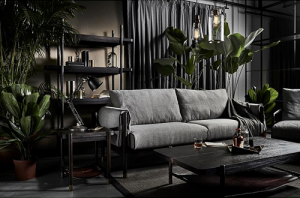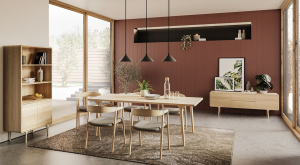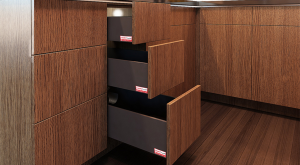Something Old, Something New: The Changing Face of Craft and Innovation in the Furniture Industry
Competing with big box brands that mass-produce furniture that are both affordable and serviceable, smaller players must find ways to carve their niche in the industry. But when scale is not on their side, how might one do so?
Today’s furniture industry landscape is dominated by big box brands that produce furniture for the mass market which are cost-efficient, but tend to be cookie-cutter and disposable. Online shopping behemoths Taobao and Amazon have also become an increasingly popular avenue for budget-minded consumers, as their economies of scale enable them to offer products at prices that would be unsustainable to smaller brands to compete with. It’s a grim outlook for SMEs that do not have the capacity to do this – but one that brands are finding ways to subvert by turning to other strategies.
The Value of Craft
To avoid losing a race to the bottom, some brands opt not to compete with the larger players on price alone. Instead, they’ve chosen to offer value by focusing on craftsmanship and customisation. As Marcus Wong, Business Development Manager of local furniture brand Danovel says, “There will always be a group who are looking for the cheapest. But they are not our customers.”
Danovel is the parent company of Zest Livings, which prides itself on making quality custom furniture at affordable prices. Wong continues, “We bet on the appeal of quality, the way it is expressed in how you build each piece of furniture: every screw, the thickness of the plywood used, the quality of the foam. All this may not be visible to the customer, but is apparent if one looks closely at the core values of the brand, and sees if it translates to their products.”
Homegrown semi-luxe furniture label ipse ipsa ipsum expresses a similar concept by centring its brand on its artisans and the craftsmanship techniques that they bring to the table. “If you come into our stores,” ipse ipsa ipsum Founder Saurabh Mangla says, “You’ll see pictures of our artisans along with the designers that we work with featured in the backdrop.”
The brand prides itself on rekindling traditional techniques such as bone inlay and sword-making through its furniture. In doing so, it also offers customers the opportunity to enjoy luxury in the form of custom furniture made from unique materials. The level of customisation that smaller brands like these offer is one that big box retailers would find hard-pressed to match.
Speaking of the uniqueness of handcrafted materials in an increasingly mass-manufactured world, Emily Sim, Materials and Applications Director of local panels label Panelogue, says, “Handcrafted and natural materials often means that no two pieces are ever the same. When you apply it to wall panels, there is no repetition, enhancing the biophilic experience or natural setting in your home. In the process of making the piece of furniture, special care is taken to observe the grains of the wood so that its ebbs and flows are tailored to the design.”
She finds that the past year of staying at home due to the pandemic has made consumers more mindful and discerning of the furniture that they choose for their homes. It’s a sentiment that Mangla concurs with – he cites consumers wanting to furnish more thoughtfully, choosing pieces that are more comfortable and which tell a story. Perhaps it is that as the world continues to ride out the pandemic, entertaining at home has become more of the norm due to the increased risks of socialising outdoors. Consumers are thus turning their eye to statement pieces that they can show off, beyond the furniture serving their basic functions.
This increasing demand for handcrafted furniture looks set to continue as consumers cultivate an increasing appetite for sustainability and individuation. Much as the slow food and slow fashion movements gain traction due to the public’s growing concerns about the impact of their actions on the environment, slow furniture may well be the next expression of this trend. As consumers pay closer attention to the provenances of the materials that go into their furniture, and the makers whom they support when they shop, smaller local enterprises in the furniture industry are better primed to serve this market than the larger conglomerates.
Innovations in Furniture Manufacturing
Focusing on craftsmanship and customisation is a way of returning to the roots of furniture creation – but solely relying on past methods may not be sufficient for brands to survive the competitive marketplace of today. Brands thus contemporaneously have an eye to harnessing technology to set themselves apart in various aspects of the business.
On the product front, Panelogue’s sister company, Superstructure, is a consultancy that focuses on computational design and design for manufacturing and assembly. They’re exploring new methods to digitally process Panelogue’s panels using machines, innovating to improve upon the brand’s existing processes and handcrafted surfaces.
Brands like ipse ipsa ipsum have started to capitalise on technological tools in their marketing and post-sales strategy. For instance, augmented reality technology and 3D imaging software have been adopted to help customers visualise their furniture in their own homes, creating more touchpoints for customer interaction online.
Mangla shares that their in-room AR function has been popular with customers, because “people love to play. It’s the sort of casual thing that you can do when you’re at home having a glass of wine, and you have an eureka moment about the best piece to complement your room.” These additional touchpoints are part of what the brand calls its omni-channel strategy, their effort to engage their potential customers seamlessly regardless of whether they first discover the brand online or in-store.
Apart from this, the brand is also looking at the use of data analytics and machine learning algorithms to better understand their customers’ needs and make key decisions in steering the brand’s direction. Big data analytics is by no means a tool specific to the furniture industry, but definitely one that furniture brands are increasingly learning to capitalise on as they make the move to online sales platforms, especially in the wake of the pandemic.
Fundamentally, it may not be possible to completely divorce craftsmanship from the furniture industry, but neither is it likely that solely relying on craftsmanship as a unique selling point is sustainable. Instead, companies are finding a sweet spot between quality craftsmanship, technological innovation, as well as savvy marketing in order to tell their story and differentiate their brand in the marketplace. By infusing the old with the new, the beauty of tradition can find resurgence in the embrace of contemporary times.
[By Michelle JN Lim]
28 February 2021










